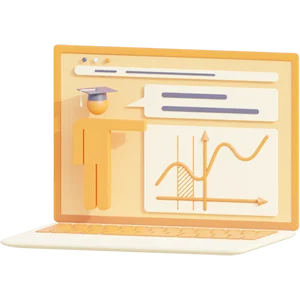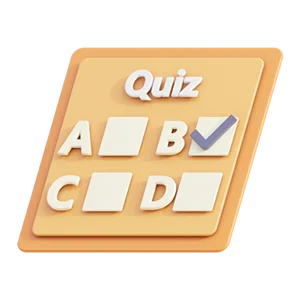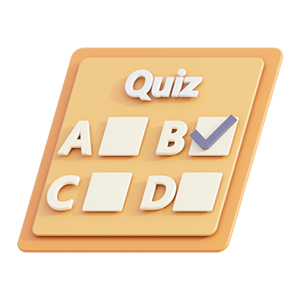BGZ2025 Presentation Practical Indirect Calorimetry Powerpoint and preparations for the meetings
This document contains the Powerpoint Presentation used notes during the presentation of BGZ2025 Practical Indirect Calorimetry. Besides, the end of the document contains the preparation for the two meetings from the practical Indirect Calorimetry
Preview document (1 van de 20 pagina's)
Voordelen van Knoowy
€ 6,99
 Niet tevreden? Geld terug
Niet tevreden? Geld terug
 Document direct te downloaden
Document direct te downloaden
 € 0,50 korting bij betalen met saldo
€ 0,50 korting bij betalen met saldo
-
 Ontvang gratis oefenvragen bij document
Ontvang gratis oefenvragen bij document

Specificaties
- School: Maastricht University
- Opleiding: Gezondheidswetenschappen
- Vaknaam: BGZ2025 Use it or Lose it
- Alle documenten voor dit vak ›
Document
- Rubriek: Overige documenten
- Bijgewerkt op: 01-11-2023
- Gemaakt op: 26-01-2021
- Type: .pdf
- Pagina's: 20
- Taal: Nederlands
Tags
Verkoper
Ik ben afgestudeerd aan de opleiding Gezondheidswetenschappen aan Maastricht University en volgde de richting Biologie en Gezondheid. Op mijn profiel kun je alle documenten, voor een lage prijs, vinden die je nodig hebt om je studie zo goed mogelijk af te ronden. Er staan uitwerkingen van taken, voorbereidingen voor bijeenkomsten, presentaties, verslagen en oefenvragen op mijn profiel. Tevens heb ik bundels van de verschillende blokken en van het volledige 1e, 2e en 3e jaar gemaakt (inclusief of exclusief FiA documenten). Kijk gerust rond op mijn profiel of er documenten voor je bij zitten en mocht je vragen hebben (algemeen, over de opleiding of over de documenten zelf), kun je mij altijd een berichtje sturen! :)
Beschikbaar in bundel
Vakken van Gezondheidswetenschappen - Maastricht University
Meer Gezondheidswetenschappen ›aging and health anxiety disorders bedreigingen van gezondheid bgz2021 leven in evenwicht bgz2022 de continuïteit van het leven bgz2023 aanval en verdediging bgz2024 food for life bgz2025 use it or lose it bgz2026 the basic principles of pharmacology een leven lang gezond een leven lang gezond gzw1021 fia 2.2: wetenschap in de maatschappij gzw1021 een leven lang gezond gzw1022 bedreigingen van gezondheid gzw1023 introductie wetenschappelijke onderzoeksmethoden gzw1024 gezondheid, voeding en bewegen gzw1025 zorgen voor gezondheid gzw1026 introduction to statistical methods for data analysis gzw1242 gezondheid als norm (blok 5) gzw1242 gezondheid als norm (gzw1021 een leven lang gezond) gzw2225 phia 2.5 sapere aude gzw3224 introductie wetenschappelijke onderzoeksmethoden introductie wetenschappelijke onderzoeksmethoden - gzw1023 voortgezette statistiek en methoden van onderzoek
Al meer dan 146.000 tevreden studenten
-
Nina
Ideale site! Handig als je weinig tijd hebt om een samenvatting te maken. Je kunt gelijk met leren beginnen.
-
Debbie Schreurs
Knoowy helpt mij bij mijn studie. Ik leer effectiever. Daardoor zijn mijn punten hoger en houd ik tijd over voor een drankje met mijn studiegenoten.
-
anonymous
Een echte aanrader voor studenten. Knoowy is heel gemakkelijk te gebruiken.
-
Maartjebroerx
Top, handig voor al je toetsen/tentamens. Fijn in gebruik en te betalen, andere sites zijn duurder.
-
Bramschillings
Als een super fijne website die het makkelijk maakt om te studeren aan de hand van samenvattingen.
-
WendyBert
Zeker de kost waard om dit uit proberen. Heel leerrijke documenten die helemaal voldoen aan je verwachtingen.
-
n2003
Handige website voor examenvragen, samenvattingen, enz. . De website geeft een duidelijk overzicht van de verschillende keuzes die je hebt.
-
8117507
Heb jij een goede samenvatting nodig en heb je geen zin in om zelf samen te vatten? Dit is de oplossing!
 Actie: ontvang 10% korting bij aankoop van 3 of meer items!
Actie: ontvang 10% korting bij aankoop van 3 of meer items!
Actie: ontvang 10% korting bij aankoop van 3 of meer items!







